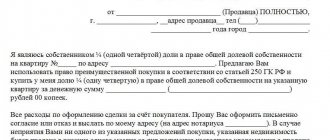Home/Returns and exchanges/Cash on delivery
The increase in the number of remote purchases, including via the Internet, is increasingly attracting buyers from all over the country. The main advantages for the client are an unlimited selection of products and loyal prices. But along with the growing popularity of online stores, the number of scammers who want to make money from gullible customers is also increasing.
For your information
That is why many customers prefer to make purchases using the cash on delivery service. This is due, first of all, to the fact that the customer insures himself against monetary losses arising after interaction with an unscrupulous seller.
Normative base
According to Russian legislation, purchases in online stores are regulated by the following regulations:
Attention! If you have any questions, you can chat for free with a lawyer at the bottom of the screen or call Moscow; Saint Petersburg; Free call for all of Russia.
- Federal Law “On Protection of Consumer Rights”.
- Rules for the provision of postal services.
- Civil Code.
Additional information
In accordance with Article 26-1 of the Federal Law “On the Protection of Consumer Rights”, the buyer has the right to refuse the parcel upon receipt or after 7 days.
In some cases, the client retains the right to return purchased goods for up to 3 months (if the return conditions have not been agreed upon in advance).
What happens if you don’t pick up a parcel from SDEK, paid in advance?
If the item has been partially or fully paid for before shipping, it makes no sense to refuse it at the post office - this way you will lose money. But the fact that the item has already been paid for does not mean that the item cannot be returned. Here you can apply the second special rule for the distance sale of goods:
the buyer may refuse goods purchased remotely within 7 days from the date of receipt (clause 4 of article 26.1 of the PZPP).
This rule applies to both prepaid purchases and cash on delivery. You can simply pick up the product at the post office, look at it at home, and if it doesn’t suit you, return it within a week. When returning, the seller will have to return your money within 10 days, minus the transportation costs incurred by him (paragraph 5, part 4, article 26.1 of Federal Law No. 2300-1).
If the parcel has already been paid for, we do not recommend checking what will happen if I do not pick up the order from the post office. On the contrary, we recommend that you pick it up as soon as possible, check it and send it back to the seller, attaching an application, a copy of the payment receipt and a TTN with the date of receipt.
Sample application:
Application for return of goods purchased remotely
The essence of cash on delivery
The essence of the service is that the client places an order without making an advance payment. Payment is made only after receiving the parcel at the post office, and the cost of delivery and the fee for sending funds to the seller are added to the amount of the order itself.
The cash on delivery purchase algorithm consists of several simple steps:
- the client selects a product on the seller’s website and places an order;
- the store manager contacts the potential buyer to confirm the order and clarify details;
- company employees form an order, pack it, and send it by mail to the address specified by the customer;
- After receiving the parcel, representatives of the post office send a notification to the client;
- the buyer comes to the post office, pays and picks up the parcel by cash on delivery.
Attention
The buyer may change his mind and refuse the cash on delivery package until the order is shipped.
In such a situation, it is better to notify us in advance by choosing any convenient method of communication.
Refusal methods: how to return a purchase to the sender?
There are two ways to cancel an order by mail and send it back.
Correct
The buyer comes to the post office and draws up a written refusal to purchase the parcel. A special note about the action should be made in the postal notice.
Wrong
Do not redeem the postal item and find out a month later that the received parcel was sent back to the seller. In this method, the consumer does not incur any monetary expenses.
The first method is the most preferable for the buyer. Taking into account paragraph 44 of the Rules established by the Government on July 31, 2014 N 234, the refusal of postal items is carried out by the buyer by putting a corresponding mark in the notice.
Is it possible to refuse a parcel at the post office without opening it?
There is an important nuance of the procedure that not everyone knows about. Customers prefer cash on delivery purchases through an online store because they think that they will be able to inspect the goods and only then pay. However, the right to open is granted only after the entire amount of the order is transferred to the cashier at the post office.
IMPORTANT
You can refuse a parcel by cash on delivery without opening it, based only on external signs, for example, an inflated order amount, incorrectly indicated weight or questionable contents of the parcel.
Before payment, it is only possible to check the integrity of the packaging and the compliance of the actual weight with that indicated by the sender. If the recipient has no comments on the appearance of the parcel, then claims regarding the contents will not be accepted.
It turns out that cash on delivery only guarantees the arrival of the parcel, but not its contents.
To whom should I return the parcel with cash on delivery?
The parcel is returned to the sender at the address indicated on it. This happens regardless of the return method - both in the case when the parcel is returned by postal employees, being unclaimed for a month, and in the case when the buyer decides to independently return it to the seller. The parcel is returned regardless of the country of destination - be it to Russia, Belarus, or China.
If a clear return address is not indicated directly on the parcel, you should contact the resource where the purchase was made. Typically, the site rules indicate the return address to which returns are accepted. Responsible sellers usually include an information sheet with such information directly in the parcel itself. If you have difficulty finding information, contact a store representative or the seller directly.
Returning a parcel after opening
The recipient can open the box and check the quality of the arrived goods only after paying for the parcel. However, if upon receipt, based on any external signs, a citizen determines a possible defect or discrepancy, then together with the post office employees a report is drawn up and the parcel is opened.
In this case, payment for the order is not charged to the recipient until the inspection is carried out. If, after checking, it turns out that everything is in order with the goods, then the cash on delivery amount will be charged, and the act itself will be cancelled.
Attention
A conscientious seller can include an inventory of the contents in the parcel and use the Russian Post service to list the contents. In this case, the parcel is also opened together with the postal worker, and payment is made after checking the contents of the parcel.
If, after inspection, it turns out that the product has a defect, a shortage or an unauthorized replacement, then the postal employee draws up a report, which is signed by the manager and the postal employee who opened the parcel, as well as by the addressee. Then the goods are returned to the receiving post office for delivery to the sender.
Additional Information
To make sure that the seller did not commit a fraudulent act by sending a completely different product, many buyers open the parcel immediately after paying at the post office. However, this will not help restore justice immediately, and the post office employees will not be able to accept a claim for cash on delivery. In this case, only contacting law enforcement agencies will help to identify the fact of fraud.
If the contents of the parcel do not correspond to the order
Despite the apparent attractiveness of shopping in online stores, the difficulty of choice for customers lies in the lack of opportunity to examine the product and evaluate its quality. The basis for making a decision to purchase is only the photographs and description of the object presented on the seller’s website.
For your information
Therefore, consumer rights are protected by a law with the appropriate title. According to the Federal Law “On the Protection of Consumer Rights” (Article 26-1), the consumer has the right to refuse the product within seven days after receipt. If the contract between the seller and the buyer did not initially establish possible return periods, then the maximum period for the client to make a decision to refuse is 3 months.
Good quality product
Goods that are returned not due to poor quality or defects must retain their presentable appearance and original properties at the time of sending to the seller. At the same time, the buyer of a cash on delivery parcel must retain documents confirming the fact of sale - checks, receipts. If the client does not have such documents, he has the right to prove in other ways the fact of purchasing the property from a specific seller.
The procedure for returning a parcel by cash on delivery to the online store consists of three stages:
- notification to the seller of the intention to return the goods;
- drawing up a return application;
- forwarding the goods to the seller.
Attention:
The commission for sending money back to the buyer is paid by the seller.
It is prohibited to return products made to order or intended for personal use.
Defective product
If the purchased item does not meet the consumer’s quality expectations, he can expect one of the following compensation options from the seller:
- elimination of defects at the expense of the company;
- reimbursement of the buyer's expenses when eliminating defects independently;
- proportional reduction in the original cost;
- replacing the product with a similar one, but of proper quality;
- replacement with a similar product with recalculation of its cost (additional payment by the client or refund of the remaining amount).
Additional information
The main thing is to act in accordance with the law and comply with the established deadlines. In this situation, the post office acts only as an intermediary between the parties to the transaction. The duties of the employees include accepting payment and issuing the parcel cash on delivery to the client on behalf of the sender.
What does the law say?
According to the norms of the Resolution of the Russian Federation of September 27, 2007 No. 612 “On approval of the Rules for remote sales”, the buyer of goods can refuse the goods ordered by him at any time before the moment of its transfer. Moreover, he can refuse even the goods already received within seven days after delivery.
Thus, legally you have the right to refuse your package waiting for you at the post office. The goods will remain there for thirty days, after which they will be sent back to the seller.
Moreover, until the recipient receives the parcel, the purchase and sale transaction is not completed. Therefore, until then, the goods are the property of the seller.
The only thing the seller can demand is a refund of shipping costs. In such cases, he may even threaten you with legal action. At the same time, few people go to court, since legal costs can significantly exceed the money spent by the seller on delivery of the goods. And given that there may be a significant number of such buyers, it is easier for the seller to pay for delivery rather than suffer through numerous lawsuits with an uncertain final result.
Consequences of failure
In fact, the client can refuse to receive a parcel by cash on delivery in two ways:
- Visit the post office in good faith and write a refusal application.
- Ignore the fact that the parcel has arrived and do not come to the post office. In this case, the goods will be sent to the sender after a month.
Of course, it would be more correct to go to the post office and write an official refusal. But in this case, shipping costs will be borne by the client. If you follow the second scenario, the recipient will not incur any costs immediately, but the seller has the right to go to court to recover compensation.
For your information
In reality, such cases rarely go to court, since the delivery amounts are usually not so large, and the seller still has to prove the fact of violation on the part of the buyer. In addition, the order amount often includes shipping costs in advance.
What happens if they threaten to sue?
NOTHING!
You are far from the first and not the last person who did not pick up a package from the post office. It is usually sellers who do not value their customers who threaten to sue. They may send you SMS messages with threats, write in instant messengers that they have prepared claims for a cosmic sum and strongly recommend that you resolve the issue out of court. We declare responsibly - all this is nonsense and fiction, designed for gullible people with an unstable psyche!
The only thing that you legally owe to the distance seller in case of refusal of the goods is to pay transportation costs (paragraph 5, part 4, article 26.1 of the PLA). He has no right to demand anything more from you. We doubt it... but why doubt it - we are sure that the store will not prepare and file a lawsuit over 200-300 rubles!
If you intend to act in good faith, pay the seller’s transportation costs at the post office. This way you will deprive the store of any reason to make a claim against you, and at the same time save your nerve cells and save yourself from threatening messages!









